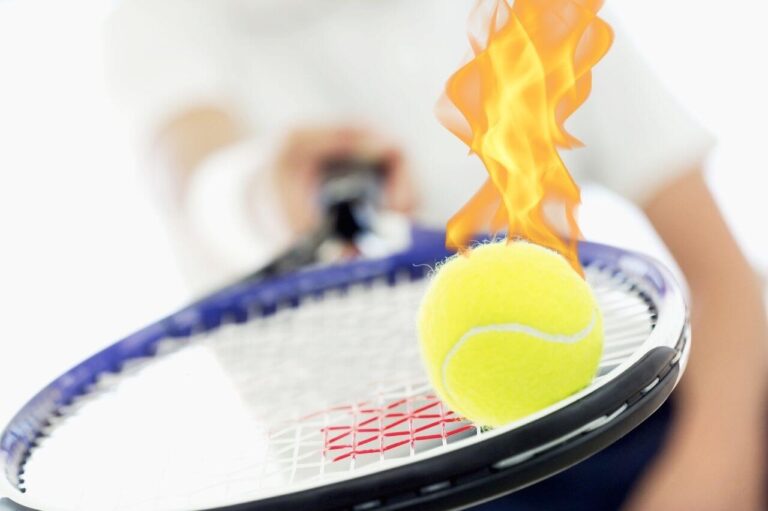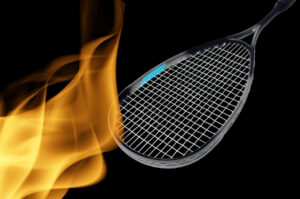Hey there, fellow tennis aficionados! It’s Matt, your go-to guy for all things tennis-related. Today, we’re diving deep into the intricacies of tennis racket balance.
Whether you’re a seasoned pro or just starting, understanding racket balance can significantly impact your game.
So, let’s grab our rackets and unravel the mystery behind this crucial aspect of tennis gear.
Unveiling the Essence of Tennis Racket Balance
Tennis racket balance is the distribution of weight in a racket, affecting how it feels in your hand during play.
It’s a key factor influencing your swing, power, and overall performance on the court.
Simply put, it’s the equilibrium point of your racket, determining whether it leans towards the head or handle.

The Two Key Types of Balance
1. Head-Heavy Balance
When a racket is head-heavy, the majority of its weight is concentrated on the head. This type of balance is often favored by players seeking more power in their shots.
The extra weight in the head generates momentum, allowing for potent groundstrokes and forceful serves.
Conversely, head-heavy rackets can be less maneuverable, requiring more effort for quick reactions at the net. Players with a baseline-dominant style often find head-heavy rackets beneficial for their playing style.
2. Handle-Heavy Balance
Conversely, a handle-heavy racket has more weight towards the handle. This configuration offers enhanced control and maneuverability.
Players who prefer finesse, precision, and quick volleys tend to gravitate towards handle-heavy rackets.
However, the drawback of handle-heavy rackets is the potential for decreased power, especially in baseline shots and serves.
It requires players to generate their power, making it essential for those with a more controlled playing style.
Finding Your Perfect Balance
The Impact on Your Swing
Your racket’s balance directly influences your swing mechanics.
A head-heavy racket generates more power effortlessly, whereas a handle-heavy one demands more wrist action for controlled shots.
Experimenting with both can help you discover which aligns better with your playing style.
Maneuverability on the Court
Consider the type of tennis you play. If you’re a baseline warrior who loves powerful groundstrokes, a head-heavy racket might suit you.
On the other hand, if you thrive in the finesse of the net game, a handle-heavy racket could be your secret weapon.
Striking the right balance is about finding what complements your strengths and mitigates your weaknesses.
The Science Behind Racket Balance
Understanding racket balance involves delving into the physics of tennis.
The balance point is measured in centimeters from the bottom of the racket, with values typically ranging from 31 to 37 cm.
Balancing at 33 cm, for instance, signifies an equal distribution of weight between the head and handle.
Choosing the Ideal Racket Balance for You
Tailoring to Your Playing Style
Selecting the right balance aligns with your unique playing style. If you’re still unsure, test rackets with different balances to feel the difference in your strokes.
Remember, there’s no one-size-fits-all, and personal preference plays a crucial role in your choice.
Consideration for Physical Strength
Your physical strength is another factor in finding the perfect balance.
Players with more strength may benefit from a head-light racket, as they can generate power more efficiently.
In contrast, players with less physical strength might find a head-heavy racket aids in shot power.
The Role of Balance in Injury Prevention
Understanding racket balance goes beyond performance; it also plays a role in injury prevention. The wrong balance may strain specific muscles and joints, potentially leading to injuries.
Take the time to assess how your chosen racket balance affects your body and adjust accordingly.
The Evolution of Racket Technology
Racket manufacturers continually innovate to provide players with the best of both worlds. Advancements in materials and design offer rackets that combine the power of a head-heavy racket with the control of a handle-heavy one.
Keep an eye on the latest releases to stay ahead of the game.
A Quick Guide to Adjusting Racket Balance
Sometimes, the perfect racket is just a customization away. Players can tweak the balance of their rackets by adding lead tape strategically.
Experiment with placement to find the sweet spot that enhances your performance without compromising comfort.
| Aspect | Head-Heavy Racket | Handle-Heavy Racket |
|---|---|---|
| Power | High | Moderate |
| Control | Moderate | High |
| Maneuverability | Lower | Higher |
| Suitable Playing Style | Baseline Dominant | Net Game Enthusiast |
Conclusion: Striking the Right Balance for Your Game
In the ever-evolving world of tennis, understanding racket balance is a game-changer.
It’s not just about power or control; it’s about finding the equilibrium that elevates your unique playing style.
Whether you lean towards the head or handle, let your racket be an extension of your game.








